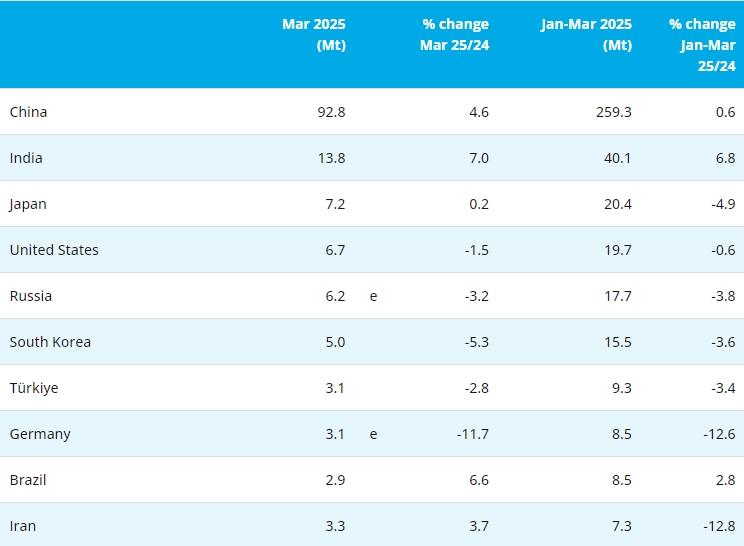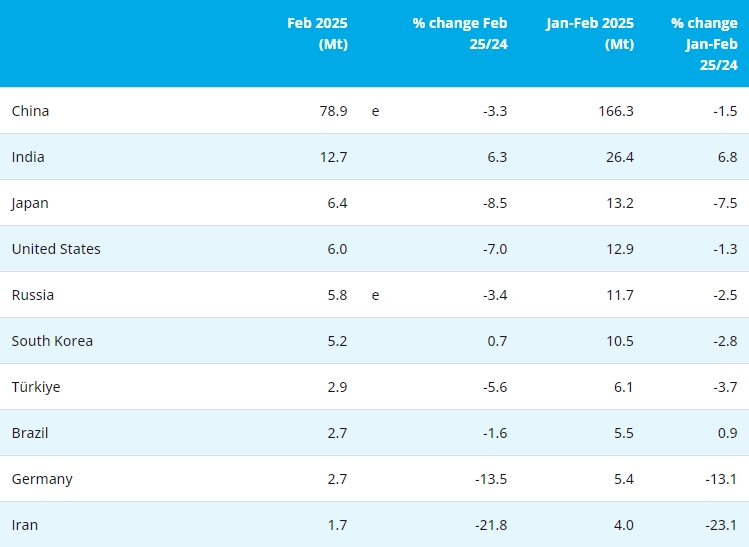【Ferro-alloys.com】European Union steel mills may in the future risk having their operating permits removed if they are unable to restrict their greenhouse gas emissions to certain levels, steel industry representatives warned Sept. 8.
The European Commission is set shortly to review its Industrial Emissions Directive, which licenses steel, metals, chemicals and other basic industries in the EU, in regard to their emissions to air and water. This will be the directive's first revision since 2010. With the increased emphasis in recent years on climate safety and the circular economy, the IED is expected to be tightened up to make it fully consistent with the EU's 2019 Green Deal and this year's "Fit for 55" climate goals, "adding a layer of emissions control," said Eva Blixt, chair of European Steel Association Eurofer's Working Group on Industrial Emissions and representative of Swedish Steel Industry Association Jernkontoret.
A proposal for an updated version of the Directive is expected to be made public in January or February 2022, Blixt told S&P Global Platts in an interview. The debate among the 500 or so different steelmaking and processing plants in Europe on the possible changes and the directive's links with the EU's Emissions Trading System is however already starting, she noted.
'Command and control'
According to Blixt, one of the steel sector's main concerns regards potential changes to the IED's current Article 9.1, which states that "permits shall not include emission limit values for direct emission of greenhouse gas"; i.e. that the granting of operating permits is not dependent on companies' GFG emissions levels.
It is however now possible the IED revision may delete or change this article to introduce binding limits on greenhouse gas emissions as a prerequisite to the granting of plants' operating permits, even though the steel sector's emissions are already governed by the ETS, considered a market-based instrument, she said.
Introduction of a binding emissions limit would introduce a "command and control" element to the IED, Blixt said. The directive's revision may also involve new binding requirements on types and levels of energy usage in the sector, she said.
"The steel industry is concerned that GHG emissions limits and other climate clauses will be introduced into the IED (as a condition for) companies getting operating licenses," she said. The rules are that "if you can't conform to the IED within four years then you will have to shut."
The steel industry would like to see leeway in the directive, with a window of longer than the current eight month period given in the legislation for testing new techniques and technologies, Blixt said.
"The EU steel industry is taking the lead to transform to fossil-free steel..... but we may need a longer time to make the transformation happen," she said.
The IED, which already covers some 50,000 industrial installations in the EU, is also expected to be expanded to cover new sectors including mining, batteries production, textiles and upstream industries, Blixt noted.
All steel plants which produce at least 20 mt/hour of crude steel or hot rolling mills producing 2.5 mt/hour or above need to have an IED permit to operate.
Some speakers in a Eurofer-organized webinar Sept. 8 said that the IED's inclusion of emissions controls would effectively bring "double regulation" to the steel sector as they would be on top of steelmakers' current participation in the ETS. Under the ETS, producers need to offset their emissions with the purchase of ETS allowances. A system of free allowances for some companies, including those most at risk of carbon leakage, will be phased out by 2030.
According to EC regulations, to achieve the EU's overall greenhouse gas emissions reduction target for 2030, the sectors covered by the ETS must reduce their emissions by 43% compared to 2005 levels.
ETS 'too cheap' to save climate: MEP
Erik Bergkvist, a member of the European Parliament, said in the webinar that he considered that "ETS is a good system but let's be clear, it's not delivering. It's still too cheap so we have to increase the pace when it comes to raising the prices for emissions in the ETS system and that's one of the important things when we do the [IED] revision.
"We have a climate that is collapsing and we have to fix that," Bergkvist said. "The important thing for the IED is to be the pusher, the process that gives us the Best Available Technique to fight climate change."
Industry needs to focus on the so-called "Best Available Techniques," for instance on energy utilization and the quality of data rather than the quantity of data available in this area, the MEP said.
- [Editor:zhaozihao]



 Save
Save Print
Print Daily News
Daily News Research
Research Magazine
Magazine Company Database
Company Database Customized Database
Customized Database Conferences
Conferences Advertisement
Advertisement Trade
Trade













 Online inquiry
Online inquiry Contact
Contact

Tell Us What You Think